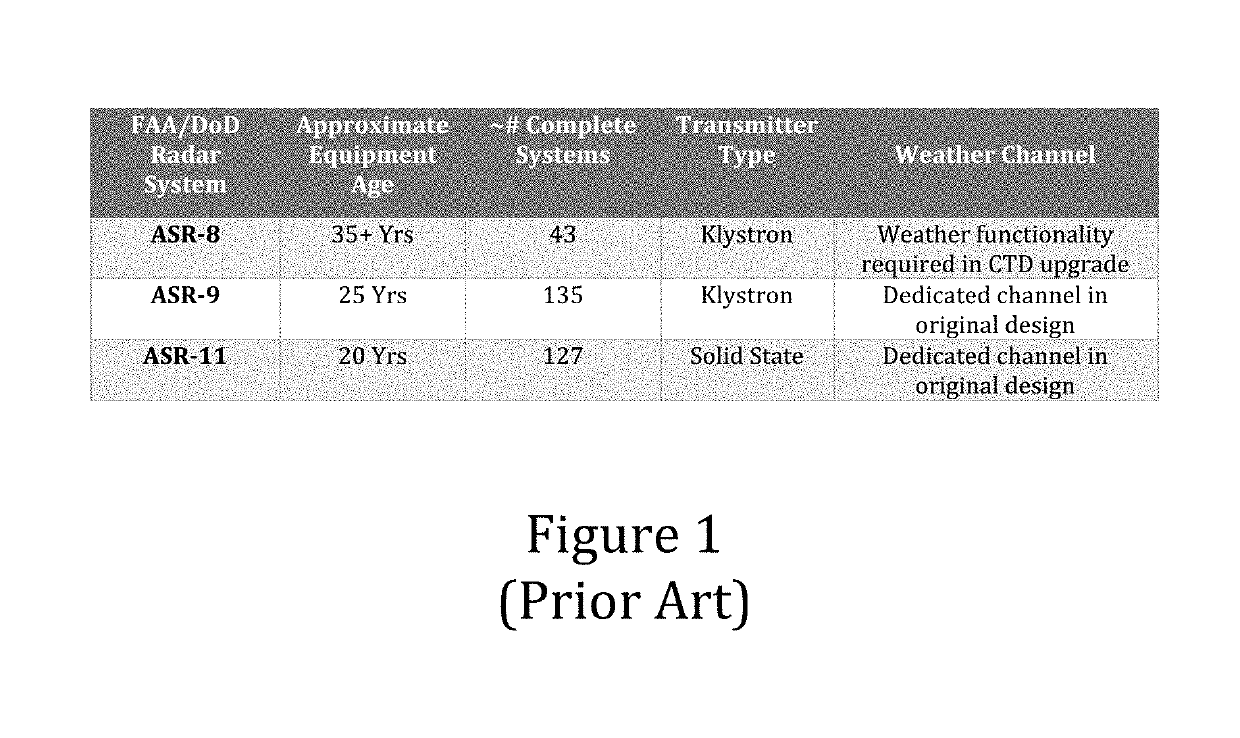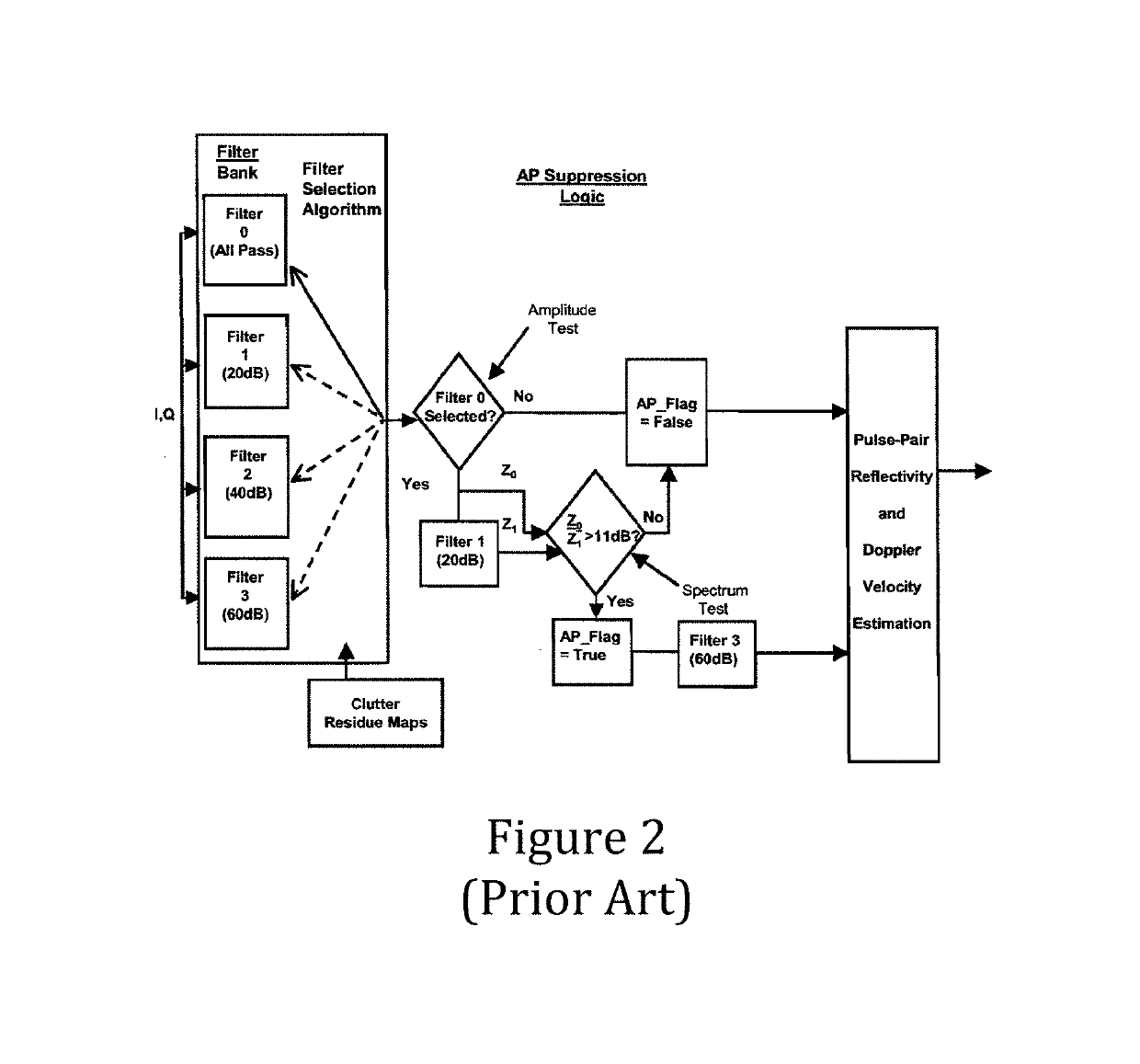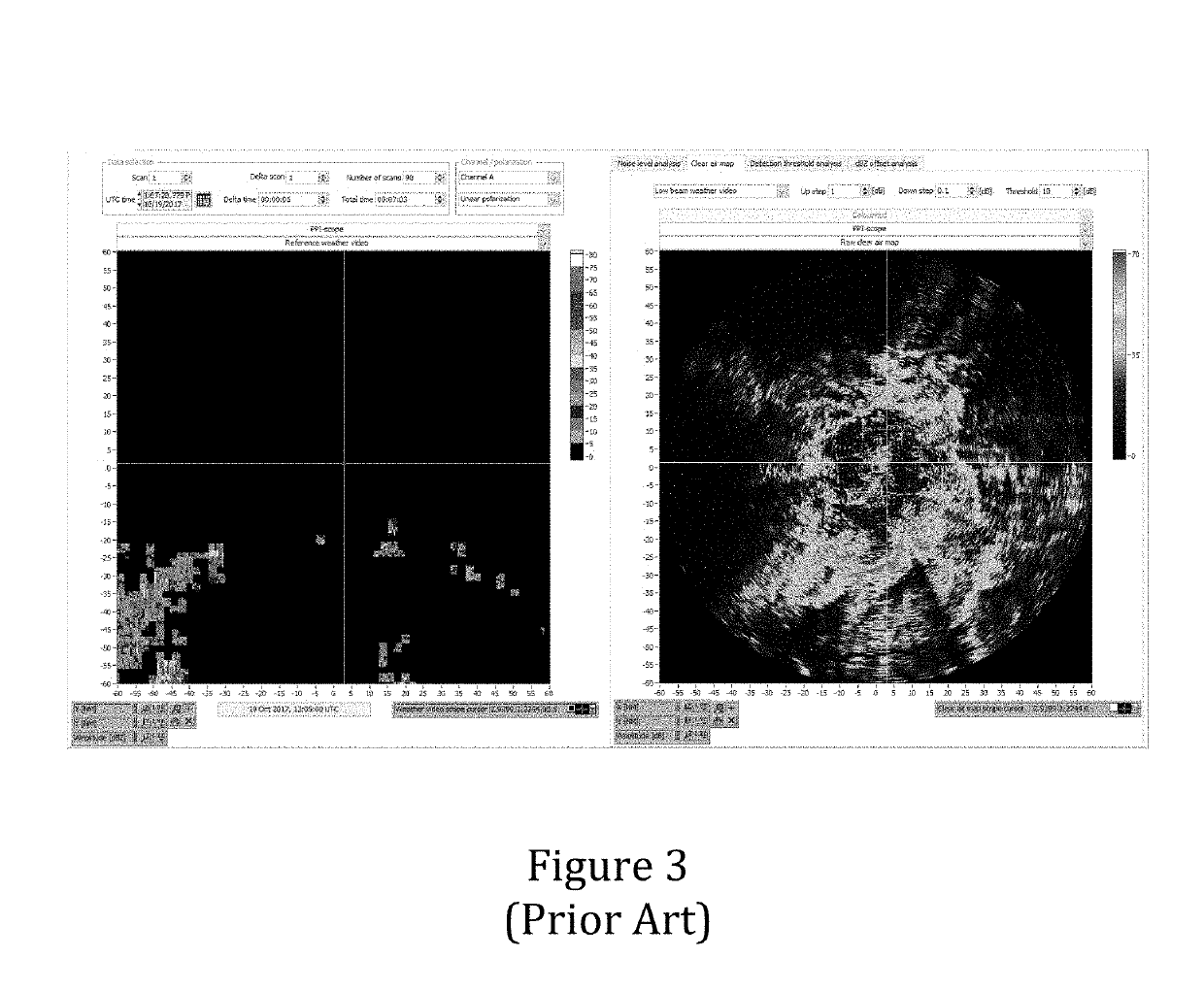Method and apparatus to minimize the effects of radar anomalous propagation for air traffic control
a radar anomalous and propagation technology, applied in the field of anomalous propagation (ap), can solve the problems of false weather reports, radar systems newer than, false returns, etc., and achieve the effects of extending the clutter map, increasing the sensitivity of the receiver, and increasing the volume of receive beam sampling
- Summary
- Abstract
- Description
- Claims
- Application Information
AI Technical Summary
Benefits of technology
Problems solved by technology
Method used
Image
Examples
Embodiment Construction
[0025]The oldest terminal radar in the NAS inventory, the ASR-8, is currently undergoing a significant upgrade that replaces the radar's receiver processing chain and digitizes the older analog system. There are significant differences between the ASR-8 and the newer radars that essentially preclude a straightforward application of the previous modification approaches to mitigate anomalous propagation. Unlike the other two radar types, ASR-9 and -11, the ASR-8 does not have a separate weather channel to exclusively process meteorological conditions, and the older style Klystron transmitter employed does not have the stability considered suitable for precise Doppler filtering. Additionally, the existing ASR-8 Moving Target Indicator (MTI) interrogation stagger arrangement is not fully conducive to accurate Doppler filtering of replies. Moreover, it is believed that previous modification approaches used for the ASR-9 and ASR-11 may inherently have a false anomalous propagation declara...
PUM
 Login to View More
Login to View More Abstract
Description
Claims
Application Information
 Login to View More
Login to View More - R&D
- Intellectual Property
- Life Sciences
- Materials
- Tech Scout
- Unparalleled Data Quality
- Higher Quality Content
- 60% Fewer Hallucinations
Browse by: Latest US Patents, China's latest patents, Technical Efficacy Thesaurus, Application Domain, Technology Topic, Popular Technical Reports.
© 2025 PatSnap. All rights reserved.Legal|Privacy policy|Modern Slavery Act Transparency Statement|Sitemap|About US| Contact US: help@patsnap.com



